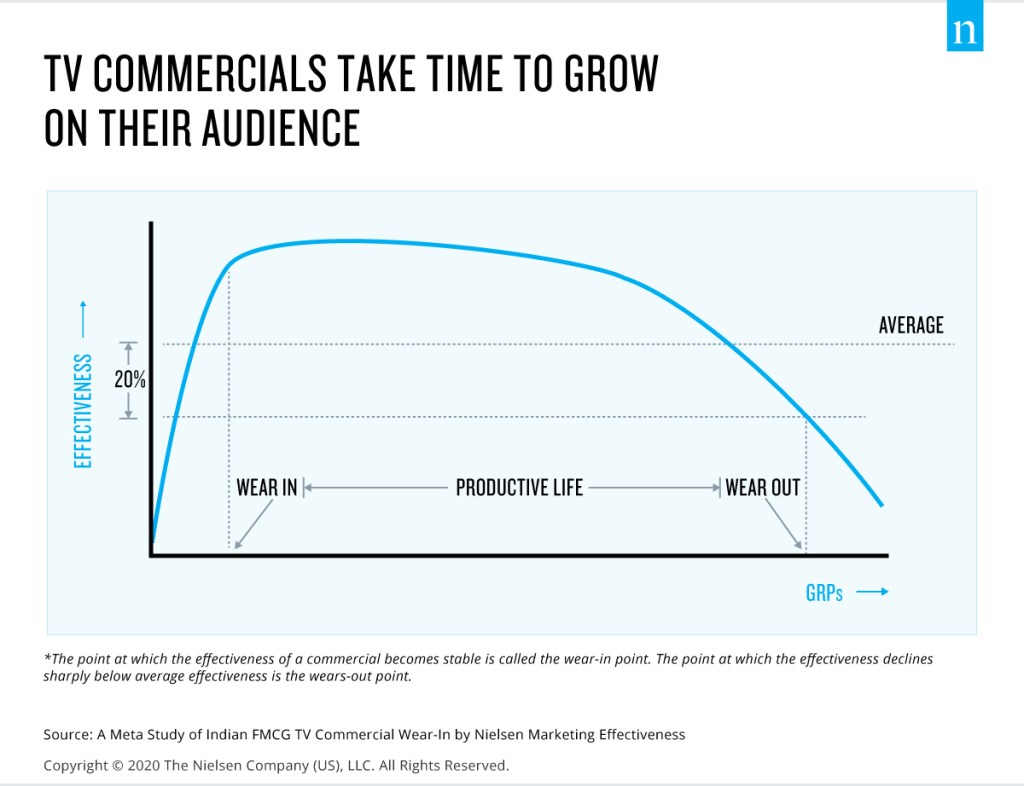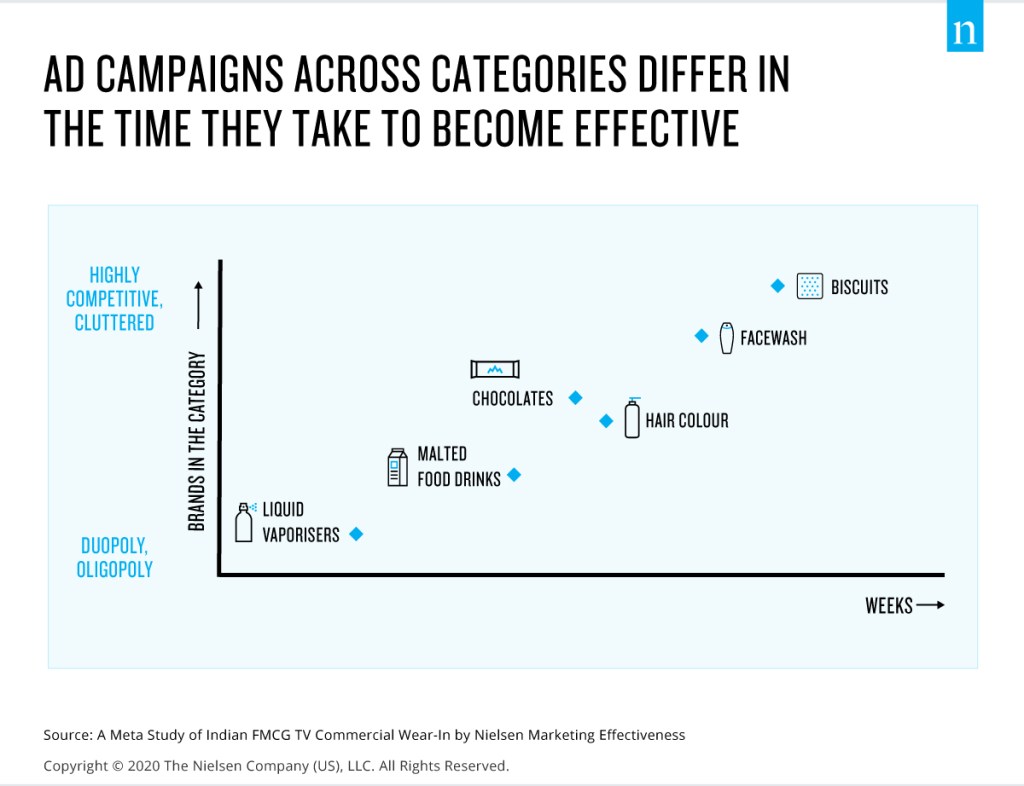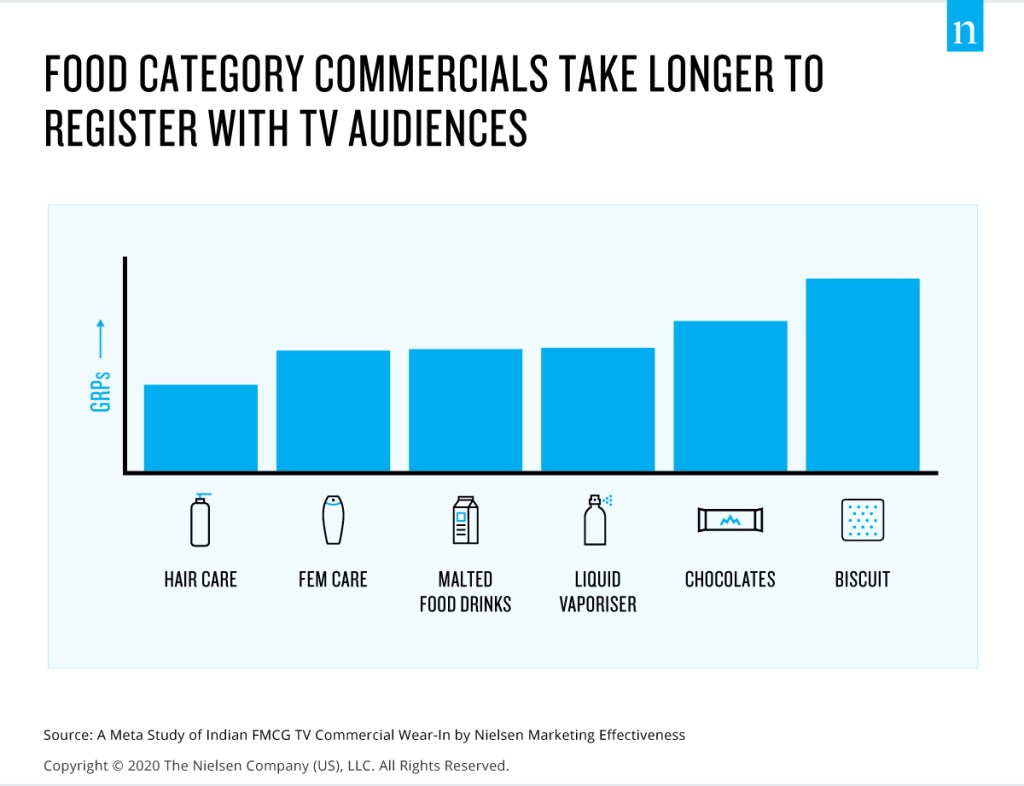Why Advertisers Can’t Afford To Stop Advertising
COVID-19 has paved the way for a new order of business with changed rules, fresh objectives and readjusted timelines. In all of this, marketing budgets have been cut back significantly. Marketers are more keen than ever to optimize budgets and closely analyze the business outcomes of every rupee spent. Considering the large amounts invested in creating and deploying TV commercials, a top ask of advertisers and their media planners is a precise and measurable number of gross rating points (GRPs) at which a commercial can be considered most effective or yield the best returns.
Optimizing Advertising Spend
With no precedent to the present business disruptions arising out of the global lockdowns, marketers are being cautious, often waiting and watching rather than making any drastic moves that they feared may further affect business. That is why, a precise measure of what campaigns are working and for what duration, can help marketers make informed decisions.
In parallel, consumers are mirroring the same caution, and consequently, consumption patterns are changing. With the two quarters of negative economic growth in India, most brands are holding back their marketing and advertising investments. A BARC-Nielsen report reveals that free commercial time (FCT) had dropped to 187 lakhs in week 18 after the lockdown in India. This is a fall of about 33% from the pre-COVID figure of 281 lakhs recorded between Jan. 11 and 31, 2020.
The BARC Nielsen report also found that most FMCG brands have cut back on their media budgets, with several choosing to go completely off-air and have been relaunching the same. However, this attempt by advertisers to save money is actually likely to cost them more, going by a Nielsen Marketing Effectiveness meta-study across 40 brands over six years. According to the study, which analyzed the impact of launched and relaunched commercials on brand sales, TV commercials relaunched after being taken off air for a spell are not as effective in driving sales as those that remained on air without a break.
What To Expect When TV Commercials Are Relaunched
Nielsen marketing mix model data shows that when most people view a commercial for the first time, they don’t remember it. It takes a few weeks for the commercial to register in audiences’ minds and start influencing sales. The ability of a commercial to impact sales, referred to as the effectiveness of the ad campaign, grows over time, and then stays relatively stable for most of its life cycle.

While a steady broadcast of a commercial wins audiences over and translates into sales for the advertiser, commercials that run too often or too infrequently both cost brands dearly. When a commercial is broadcast too often, it runs the risk of being over-exposed to the audience and they end up tuning the ad out. Such commercials lose their ability to drive incremental sales over time.
An even further wasteful and ineffective proposition than over-exposure is taking commercials off air, or going media-dark, only to relaunch it after a break. The fall in FCT figures during the lockdown reveals that several advertisers chose not to air their commercials after the onset of restrictions brought on by COVID-19. However, those advertisers who are waiting for the current situation to normalise before relaunching their commercials, will have lost touch with their carefully built base of audiences, and will be faced with the task of re-establishing their commercial in the minds of the consumer. Our Marketing Effectiveness meta-study shows that after a media-dark period, a commercial takes about three and a half months or about 1,000 GRPs just to be as effective as before, which is an expensive proposition.
The Effectiveness Of TV Campaigns Vary by Product Category
Commercials across different categories and markets perform differently, but on an average, it takes 11 weeks for the effectiveness of a new TV campaign in the FMCG category to become stable and begin influencing audiences enough to reflect on brand sales. The higher the number of commercials a viewer is exposed to, the longer it will take for a new commercial to resonate with them and start wearing in. In our Marketing Effectiveness meta-study, manufacturers in the home care category ran their campaign commercials multiple times, over an average of five weeks before they started seeing results. In contrast, a competitive and cluttered media landscape for the food category took as much as 15 weeks on an average to wear in.

Within the FMCG category, TV campaigns of non-food products wear-in sooner than food. Non-food commercials take an average of 10 weeks to make an impact compared to food category commercials, which take 12 weeks in comparison. Despite the high risk of losing valuable audiences, food category manufacturers held back their advertising when they were hit by supply chain issues during the early days of the lockdown in India. The government had categorized food products as essentials, yet manufacturers didn’t expect immediate returns or rapid solutions to their manufacturing impediments, leading them to take their campaigns off air. When such withdrawn campaigns do come back on air, advertisers will have to put in more money than non-food categories for their ads to start resonating with the audience again.

The Rules Of Campaign-planning Have Changed
The media landscape is evolving and new content platforms are emerging every quarter because of digital evolution. So, advertisers need to work harder and adapt their plans on the go to make sure that their commercials reach and engage the right audience. Amid the escalation of media traffic, commercials now take longer to become effective. An average TV campaign now takes 10% more time and 14% more GRPs to wear in than it took three years ago. If we extend the same principle to the entire media environment in India, with more competing media platforms vying for consumers’ attention, it stands to reason that wear-in will now happen at a later stage than it did three years ago. With digital penetration still rising in India at an unprecedented rate, we expect the wear-in thresholds to continue to rise across categories and brands.
Under these circumstances, planning to ensure the success of a TV commercial needs advertisers to consider different factors including the number of commercials vying for the audience’s attention, the category and the creative expression. These factors also affect the shelf life of the commercial once it starts becoming effective for advertisers. Commercials start wearing out, or losing their ability to achieve their objectives, based on the same factors. Repetitive airing and over exposure of commercials contribute significantly to loss of advertising dollars as a result of inability of the campaigns to drive incremental sales.
The Way Forward for Marketers
Advertisers often ask if they can reintroduce an old TV campaign after having completely been off air for a period, or whether they should reinvent the commercial altogether. To begin with, irrespective of the times, no advertiser wants to carry on spending media money on commercials that no longer work. So to be able to answer their question, it is crucial to be able to tell exactly when an ad reaches that point where it’s time to take it off air. It is equally important to know how much time a new commercial will take to make an impact on sales and achieve its sales potential consistently. There are a few rules of thumb to get started on making informed campaign decisions:
Start wide: New campaigns that are launched to a wide audience for the first few weeks will help advertisers reach more viewers. This builds early awareness for the campaign.
Give it time: Considering that commercials start becoming effective anytime between five and 15 weeks depending on media activity in the category, it is essential to maintain the high reach at which the campaign was launched. In the months following the launch, shorter edits of commercials will do well to maintain recall.
Maximise potential: In sensitive times like these, advertisers need to optimize budgets and keep track of every rupee spent on campaigns. In such times, campaigns that remain on air and maintain their frequency of broadcast even with shorter edits, will stand out.
Monitor effectiveness and adapt: With the possibility of accurately assessing the wear in and wear out points of campaigns, advertisers can now pull campaigns off air as soon as their effectiveness starts declining, and replace them with new campaigns to hold on to the interest of their audience.
The impact of campaigns depends on a variety of factors including the product category, media activity and economic environment. Different brands also have their own trajectories. So the most prudent way forward is for advertisers to continuously measure the effectiveness of their campaigns through measurement studies and achieve the highest possible degree of precision in their media spend.



